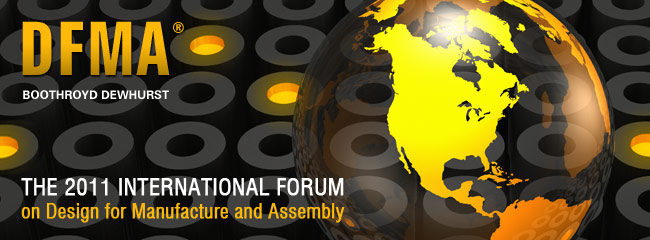Archive for the ‘How To’ Category
How To Create a Sea of Manufacturing Jobs
 It’s been a long slide from greatness for US manufacturing. It’s been downhill since the 70s – a multi-decade slide. Lately there’s a lot of hype about a manufacturing renaissance in the US – re-shoring, on-shoring, right-shoring. But the celebration misguided. A real, sustainable return to greatness will take decades, decades of single-minded focus, coordination, alignment and hard work – industry, government, and academia in it together for the long haul.
It’s been a long slide from greatness for US manufacturing. It’s been downhill since the 70s – a multi-decade slide. Lately there’s a lot of hype about a manufacturing renaissance in the US – re-shoring, on-shoring, right-shoring. But the celebration misguided. A real, sustainable return to greatness will take decades, decades of single-minded focus, coordination, alignment and hard work – industry, government, and academia in it together for the long haul.
To return to greatness, the number of new manufacturing jobs to be created is distressing. 100,000 new manufacturing jobs is paltry. And today there is a severe skills gap. Today there are unfilled manufacturing jobs because there’s no one to do the work. No one has the skills. With so many without jobs it sad. No, it’s a shame. And the manufacturing talent pipeline is dry – priming before filling. Creating a sea of new manufacturing jobs will be hard, but filling them will be harder. What can we do?
The first thing to do is make list of all the open manufacturing jobs and categorize them. Sort them by themes: by discipline, skills, experience, tools. Use the themes to create training programs, train people, and fill the open jobs. (Demonstrate coordinated work of government, industry, and academia.) Then, using the learning, repeat. Define themes of open manufacturing jobs, create training programs, train, and fill the jobs. After doing this several times there will be sufficient knowledge to predict needed skills and proactive training can begin. This cycle should continue for decades.
Now the tough parts – transcending our short time horizon and finding the money. Our time horizon is limited to the presidential election cycle – four years, but the manufacturing rebirth will take decades. Our four year time horizon prevents success. There needs to be a guiding force that maintains consistency of purpose – manufacturing resurgence – a consistency of purpose for decades. And the resurgence cannot require additional money. (There isn’t any.) So who has a long time horizon and money?
The DoD has both – the long term view (the military is not elected or appointed) and the money. (They buy a lot of stuff.) Before you call me a war hawk, this is simply a marriage of convenience. I wish there was, but there is no better option.
The DoD should pull together their biggest contractors (industry) and decree that the stuff they buy will have radically reduced cost signatures and teach them and their sub-tier folks how to get it done. No cost reduction, no contract. (There’s no reason military stuff should cost what it does, other than the DoD contractors don’t know how design things cost effectively.) The DoD should educate their contractors how to design products to reduce material cost, assembly time, supply chain complexity, and time to market and demand the suppliers. Then, demand they demonstrate the learning by designing the next generation stuff. (We mistakenly limit manufacturing to making, when, in fact, radical improvement is realized when we see manufacturing as designing and making.)
The DoD should increase its applied research at the expense of its basic research. They should fund applied research that solves real problems that result in reduced cost signatures, reduce total cost of ownership, and improved performance. Likely, they should fund technologies to improve engineering tools, technologies that make themselves energy independent and new materials. Once used in production-grade systems, the new technologies will spill into non-DoD world (broad industry application) and create new generation products and a sea of manufacturing jobs.
I think this is approach has a balanced time horizon – fill manufacturing jobs now and do the long term work to create millions of manufacturing jobs in the future.
Yes, the DoD is at the center of the approach. Yes, some have a problem with that. Yes, it’s a marriage of convenience. Yes, it requires coordination among DoD, industry, and academia. Yes, that’s almost impossible to imagine. Yes, it requires consistency of purpose over decades. And, yes, it’s the best way I know.
How To Fix Product Development
 The new product development process creates more value than any other process. And because of this it’s a logical target for improvement. But it’s also the most complicated business process. No other process cuts across an organization like new product development. Improvement is difficult.
The new product development process creates more value than any other process. And because of this it’s a logical target for improvement. But it’s also the most complicated business process. No other process cuts across an organization like new product development. Improvement is difficult.
The CEO throws out the challenge – “Fix new product development.” Great idea, but not actionable. Can’t put a plan together. Don’t know the problem. Stepping back, who will lead the charge? Whose problem is it?
The goal of all projects is to solve problems. And it’s no different when fixing product development – work is informed by problems. No problem, no fix. Sure you can put together one hell of a big improvement project, but there’s no value without the right problem. There’s nothing worse than spending lots of time on the wrong problem. And it’s doubly bad with product development because while fixing the wrong problem engineers are not working on the new products. Yikes.
Problems are informed by outcomes. Make a short list of desired outcomes and show the CEO. Your list won’t be right, but it will facilitate a meaningful discussion. Listen to the input, go back and refine the list, and meet again with the CEO. There will be immense pressure to start the improvement work, but resist. Any improvement work done now will be wrong and will create momentum in the wrong direction. Don’t move until outcomes are defined.
With outcomes in hand, get the band back together. You know who they are. You’ve worked with them over the years. They’re influential and seasoned. You trust them and so does the organization. In an off-site location show them the outcomes and ask them for the problems. (To get their best thinking spend money on great food and a relaxing environment.) If they’re the right folks, they’ll say they don’t know. Then, they’ll craft the work to figure it out – to collect and analyze the data. (The first part of problem definition is problem definition.) There will be immense pressure to start the improvement work, but resist. Any work done now will be wrong. Don’t move until problems are defined.
With outcomes and problems in hand, meet with the CEO. Listen. If outcomes change, get the band back together and repeat the previous paragraph. Then set up another meeting with the CEO. Review outcomes and problems. Listen. If there’s agreement, it’s time to put a plan together. If there’s disagreement, stop. Don’t move until there’s agreement. This is where it gets sticky. It’s a battle to balance everyone’s thoughts and feelings, but that’s your challenge. No words of wisdom on than – don’t move until outcomes and problems are defined.
There’s a lot of emotion around the product development process. We argue about the right way to fix it – the right tools, training, and philosophies. But there’s no place for argument. Analyze your process and define outcomes and problems. The result will be a well informed improvement plan and alignment across the company.
Amplify The Social Benefits of Your Products
To do g ood for the planet and make lots of money (or the other way around), I think companies should shift from an economic framework to a social one. Green products are a good example. Facts are facts: today, as we define cost, green products cost more; burning fossil fuel is the lowest cost way to produce electricity and move stuff around (people, products, raw material). Green products are more expensive and do less, yet they sell. But the economic benefits don’t sell, the social ones do. Lower performance and higher costs of green products should be viewed not as weaknesses, but as strengths.
ood for the planet and make lots of money (or the other way around), I think companies should shift from an economic framework to a social one. Green products are a good example. Facts are facts: today, as we define cost, green products cost more; burning fossil fuel is the lowest cost way to produce electricity and move stuff around (people, products, raw material). Green products are more expensive and do less, yet they sell. But the economic benefits don’t sell, the social ones do. Lower performance and higher costs of green products should be viewed not as weaknesses, but as strengths.
Green technologies are immature and expensive, but there’s no questions they’re the future. Green products will create new markets, and companies that create new markets will dominate them. The first sales of expensive green products are made by those who can afford them; they put their money where their mouths are and pay more for less to make a social statement. In that way, the shortcoming of the product amplifies the social statement. It’s clear the product was purchased for the good of others, not solely for the goodness of the product itself. The sentiment goes like this: This product is more expensive, but I think the planet is worth my investment. I’m going to buy, and feel good doing it.
The Prius is a good example. While its environmental benefits can be debated, it clearly does not drive as well as other cars (handling, acceleration, breaking). Yet people buy them. People buy them because that funny shape is mapped to a social statement: I care about the environment. Prius generates a signal: I care enough about the planet to put my money where my mouth is. It’s a social statement. I propose companies use a similar social framework to create new markets with green products that do less, cost more, and overtly signal their undeniable social benefit. (To be clear, the product should undeniably make the planet happy.)
The company that creates a new market owns it. (At least it’s theirs to lose). Early sales impregnate the brand with the green product’s important social statement, and the new market becomes the brand and its social statement. And more than that, early sales enable the company to work out the bugs, allow the technology to mature, and yield lower costs. Lower costs enable a cost effective market build-out.
Don’t shy away from performance gaps of green technologies, embrace them; acknowledge them to amplify the social benefit. Don’t shy away from a high price, embrace it; acknowledge the investment to amplify the social benefit. Be truthful about performance gaps, price it high, and proudly do good for the planet.
The Supreme Court of Technology
 The Founding Fathers got it right with three branches: legislative to make laws; judicial to interpret laws; and executive to enforce them. Back then it was all about laws, and the system worked.
The Founding Fathers got it right with three branches: legislative to make laws; judicial to interpret laws; and executive to enforce them. Back then it was all about laws, and the system worked.
What the Founding Fathers could not realize was there was a powerful, pre-chrysalis force more powerful than laws, whose metamorphosis would exploit a gap in the three branch system. Technology has become a force more powerful than laws, and needs its own branch of government. We need a Supreme Court of Technology. (Think Ph.D. instead of J.D.)
Technology is the underpinning of a sustainable economy, an economy where citizens are well-educated, healthy, and happy, and where infrastructure is safe and supports the citizens’ needs. For countries that have it, technology generates the wealth to pay for education, healthcare, and bridges. Back then it was laws; today it’s technology.
The Founding Fathers knew interpretation of laws demanded consistency, consistency that transcended the election cycle, and, with its lifetime appointment, the Supreme Court was the mechanism. And it’s the same with technology: technology demands consistency of direction and consistency of purpose, and for that reason I propose a Supreme Court of Technology.
The Chief Justice of Technology and her Associate Justices set the long term technology policy for the country. They can be derided for its long time horizon, but they cannot be ousted for making the right decisions or their consistency of purpose. The Justices decide how to best spend their annual budget, which is substantial and adjusts with inflation and population. Since they are appointed for life, the Justices tell Congress how it goes with technology (and to stop with all this gridlock gamesmanship) and ask the President for her plan to implement the country’s technology policy. (Technology transcends political parties and election cycles.)
With the Supreme Court of Technology appointed and their first technology plan in place (think environment and energy), the country is on track to generate wealth sufficient to build the best educational system in the world (think creativity, art, science, math, and problem solving) to fuel the next generation of technology leadership.
Make your green programs actionable
 There’s a big push to be green. Though we want to be green, we’re not sure how to get there. We’ve got high-level metrics, but they’re not actionable. It’s time to figure out what we can change to be green.
There’s a big push to be green. Though we want to be green, we’re not sure how to get there. We’ve got high-level metrics, but they’re not actionable. It’s time to figure out what we can change to be green.
One way manufacturers can be green is to reduce their carbon footprint. That’s one level deeper than simply “being green,” but it’s not actionable either. Digging deeper, manufacturers can reduce their carbon footprint by generating less greenhouse gases, specifically carbon dioxide. Reducing carbon dioxide production is a good goal, but it’s still not actionable.
Looking deeper, carbon dioxide is the result of burning fossil fuels,
WHY, WHAT, HOW to Improve Engineering
 When asked how to improve manufacturing, the recipe is clear: lean. When asked how to improve engineering, the recipe: there isn’t one. Each engineering improvement effort is unique; though there are common themes and building blocks, each has its own fingerprint.
When asked how to improve manufacturing, the recipe is clear: lean. When asked how to improve engineering, the recipe: there isn’t one. Each engineering improvement effort is unique; though there are common themes and building blocks, each has its own fingerprint.
Each company has its own strengths, weaknesses, opportunities and threats; each company has unique products and markets; each its own goals; each its own culture; each its own future state. Informed by uniqueness, the recipe is unique. To create your unique improvement recipe, I suggest WHY, WHAT, HOW.
WHY
Before your engineering improvement recipe can be formed, the fundamental shaping question must be answered. Take a breath, fire up your laptop, put on your headphones, and queue up your best music. Type this question:
WHY does our business demand we improve engineering?
Now, type the answer. (Literally.) Use nouns and verbs to explain why engineering must improve. If you can’t, stop. Without a clear, concise, jargon-free answer nothing can be done to advance the cause. (Though there can be plenty of activity, there can be no progress.) Without the WHY, you cannot pass GO. You must create a clear, concise WHY.
Seek out help from trustworthy people to create the WHY. Don’t move forward until you understand it well enough to explain it to the engineering organization. Now, with WHY in place, it’s time for WHAT.
WHAT
Informed by WHY, it’s time for WHAT. Secure a quiet spot, scare up a big piece of paper, and grab your favorite pen. On the top of the page, write this question:
WHAT does engineering improvement look like?
Now, draw the picture. (Literally.) Use sketches, scribbles, arrows, blocks, and people’s names to describe what improved engineering looks like. Sit in the future and describe it in present tense. Once drawn, review it with folks you trust, revise it, and repeat. If you cannot draw the future, keep trying. Once you have something, review it with folks you trust, revise it, and repeat. Don’t move forward until you draw it clearly enough to explain it to the engineering organization. And with WHAT in place, it’s time for HOW.
HOW
The first step of HOW is similar to WHAT. Pick up your favorite pen, come back to the now, and draw a picture of today’s engineering capabilities, engineering’s current state. Again, use scribbles, blocks, arrows, and names.
The second step is to define the difference between future and current states. With future and current state pictures side-by-side, perform a mathematical subtraction: future state – current state. The difference is HOW. A block in future state that’s not part of the current state is a new thing that must be created; a new arrow in the future state is an activity, interaction, or relationship that must be created; a new person, named or unnamed, represents new thinking. Things that appear in both states are strengths to build on.
The third step, prioritization. Start here:
What engineering strengths will we build on?
It’s important start with strengths. It sends the right message to the engineering organization: we must build on build on what works, build on what got us here. Engineers need to know that, fundamentally, their work is good, and major building blocks are in place, the foundation is solid.
What development areas will we improve?
Take care with this one. To avoid a demoralized engineering team, there should be fewer development areas than strengths. Though there may be many development areas, call out only the most important.
What’s the right first bite?
The most important improvements are those that strongly support the WHY; there’s a natural sequence of things (socks before shoes) that must be respected; and there’s a finite amount of work that can be done. Use these three lenses as the start of a prioritization framework.
Building blocks for engineering improvement are the same for all companies: people, tools, and processes, but there are many types of people, countless engineering tools, and all processes can be improved. WHY, WHAT, HOW can help define your unique improvement fingerprint: the right people, the right tools, the right processes, shaped by your unique company goals, and improved in right sequence.
Improve the US economy, one company at a time.
 I think we can turn around the US economy, one company at a time. Here’s how:
I think we can turn around the US economy, one company at a time. Here’s how:
To start, we must make a couple commitments to ourselves. 1. We will do what it takes to manufacture products in the US because it’s right for the country. 2. We will be more profitable because of it.
Next, we will set up a meeting with our engineering community, and we will tell them about the two commitments. (We will wear earplugs because the cheering will be overwhelming.) Then, we will throw down the gauntlet; we will tell them that, going forward, it’s no longer acceptable to design products as before, that going forward the mantra is: half the cost, half the parts, half the time. Then we will describe the plan.
On the next new product we will define cost, part count, and assembly time goals 50% less that the existing product; we will train the team on DFMA; we will tear apart the existing product and use the toolset; we will learn where the cost is (so we can design it out); we will learn where the parts are (so we can design them out); we will learn where the assembly time is (so we can design it out).
On the next new product we will front load the engineering work; we will spend the needed time to do the up-front thinking; we will analyze; we will examine; we will weigh options; we will understand our designs. This time we will not just talk about the right work, this time we will do it.
On the next new product we will use our design reviews to hold ourselves accountable to the 50% reductions, to the investment in DFMA tools, to the training plan, to the front-loaded engineering work, to our commitment to our profitability and our country.
On the next new product we will celebrate the success of improved product functionality, improved product robustness, a tighter, more predictable supply chain, increased sales, increased profits, and increased US manufacturing jobs.
On the next new product we will do what it takes to manufacture products in the US because it’s the right thing for the country, and we will be more profitable because of it.
If you’d like some help improving the US economy one company at a time, send me an email (mike@shipulski.com), and I’ll help you put a plan together.
a
p.s. I’m holding a half-day workshop on how to implement systematic cost savings through product design on June 13 in Providence RI as part of the International Forum on DFMA — here’s the link. I hope to see you there.
Upcoming Workshop on Systematic DFMA Deployment
 I will be running a half-day workshop on Systematic DFMA Deployment on June 13 in Providence, RI. The workshop will kick of BDI’s 2011 International Forum on Design for Manufacturing and Assembly and will focus on how to incorporate DFMA into your product development process.
I will be running a half-day workshop on Systematic DFMA Deployment on June 13 in Providence, RI. The workshop will kick of BDI’s 2011 International Forum on Design for Manufacturing and Assembly and will focus on how to incorporate DFMA into your product development process.
The Forum (June 14, 15) is the yearly gathering of the world’s leading DFMA experts. It is THE place to learn about DFMA and see examples and results from leading companies.
I urge the product development community to attend.
I am also presenting at the Forum and hope to finally meet you in person.
Don’t change the culture, change your behavior
 Change the culture. Easy to say, tough to do. What does it mean, anyway?
Change the culture. Easy to say, tough to do. What does it mean, anyway?
Culture is a result of something – behavior. I’ll go further – culture is behavior, behavior themes, but behavior still. Behavior is a result of behavior.
Want to change someone’s behavior? Wrong question. You can’t. You can change yours, they can change theirs. Those are the rules.
Want someone to change their behavior? Change yours to help them change theirs. Want to seal the deal? Explain why. Why cuts deeper than behavior.
Don’t change the culture, change your behavior.
Bring It Back
 Companies (and countries) are slowly learning that moving manufacturing to low cost countries is a big mistake, a mistake of economy-busting proportion. (More costly than any war.) With labor costs at 10% of product cost, saving 20% on labor yields a staggering 2% cost savings. 2%. Say that out loud. 2%. Are you kidding me? 2%? Really? Moving machines all over the planet for 2%? What about cost increases from longer supply chains, poor quality, and loss of control? Move manufacturing to a country with low cost labor? Are you kidding me? Who came up with that idea? Certainly not a knowledgeable manufacturing person. Don’t chase low cost labor, design it out.
Companies (and countries) are slowly learning that moving manufacturing to low cost countries is a big mistake, a mistake of economy-busting proportion. (More costly than any war.) With labor costs at 10% of product cost, saving 20% on labor yields a staggering 2% cost savings. 2%. Say that out loud. 2%. Are you kidding me? 2%? Really? Moving machines all over the planet for 2%? What about cost increases from longer supply chains, poor quality, and loss of control? Move manufacturing to a country with low cost labor? Are you kidding me? Who came up with that idea? Certainly not a knowledgeable manufacturing person. Don’t chase low cost labor, design it out.
(I feel silly writing this. This is so basic. Blocking-and-tackling. Design 101. But we’ve lost our way, so I will write.)
Use Design for Assembly (DFA) and Design for Manufacturing (DFM) to design out 25-50% of the labor time and make product where you have control. The end. Do it. Do it now. But do it for the right reasons – throughput, and quality. (And there’s that little thing about radical material cost reduction which yield cost savings of 20+%, but that’s for another time).
The real benefit of labor reduction is not dollars, it’s time. Less time, more throughput. Half the labor time, double the throughput. One factory performs like two. Bring it back. Fill your factories. Repeat the mantra and you’ll bring it back:
Half the labor and one factory performs like two.
QC stands for Quality Control. No control, no quality. Ever try to control things from 10 time zones in the past? It does not work. It has not worked. Bring it back. Bring back your manufacturing to improve quality. Your brand will thank you. Put the C back in QC – bring it back.
Forward this to your highest level Design Leaders. Tell them they can turn things around; tell them they’re the only ones who can pull it off; tell them we need; tell them we’re counting on them; tell them we’ll help; tell them to bring it back.
Don’t bankrupt your suppliers – get Design Engineers involved.
 Cost Out, Cost Down, Cost Reduction, Should Costing – you’ve heard about these programs. But they’re not what they seem. Under the guise of reducing product costs they steal profit margin from suppliers. The customer company increases quarterly profits while the supplier company loses profits and goes bankrupt. I don’t like this. Not only is this irresponsible behavior, it’s bad business. The savings are less than the cost of qualifying a new supplier. Shortsighted. Stupid.
Cost Out, Cost Down, Cost Reduction, Should Costing – you’ve heard about these programs. But they’re not what they seem. Under the guise of reducing product costs they steal profit margin from suppliers. The customer company increases quarterly profits while the supplier company loses profits and goes bankrupt. I don’t like this. Not only is this irresponsible behavior, it’s bad business. The savings are less than the cost of qualifying a new supplier. Shortsighted. Stupid.
The real way to do it is to design out product cost, to reduce the cost signature. Margin is created and shared with suppliers. Suppliers make more money when it’s done right. That’s right, I said more money. More dollars per part, and not more from the promise of increased sales. (Suppliers know that’s bullshit just as well as you, and you lose credibility when you use that line.) The Design Engineering community are the only folks that can pull this off.
Only the Design Engineers can eliminate features that create cost while retaining features that control function. More function, less cost. More margin for all. The trick: how to get Design Engineers involved.
There is a belief that Design Engineers want nothing to do with cost. Not true. Design Engineers would love to design out cost, but our organization doesn’t let us, nor do they expect us to. Too busy; too many products to launch; designing out cost takes too long. Too busy to save 25% of your material cost? Really? Run the numbers – material cost times volume times 25%. Takes too long? No, it’s actually faster. Manufacturing issues are designed out so the product hits the floor in full stride so Design Engineers can actually move onto designing the next product. (No one believes this.)
Truth is Design Engineers would love to design products with low cost signatures, but we don’t know how. It’s not that it’s difficult, it’s that no one ever taught us. What the Design Engineers need is an investment in the four Ts – tools, training, time, and a teacher.
Run the numbers. It’s worth the investment.
Material cost x Volume x 25%
 Mike Shipulski
Mike Shipulski